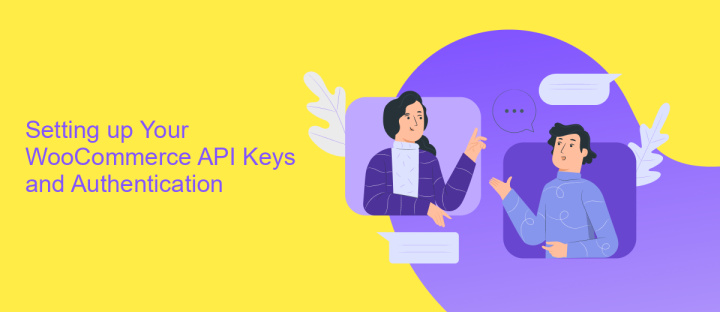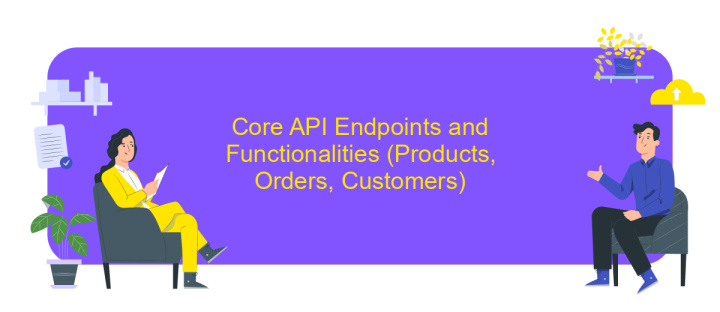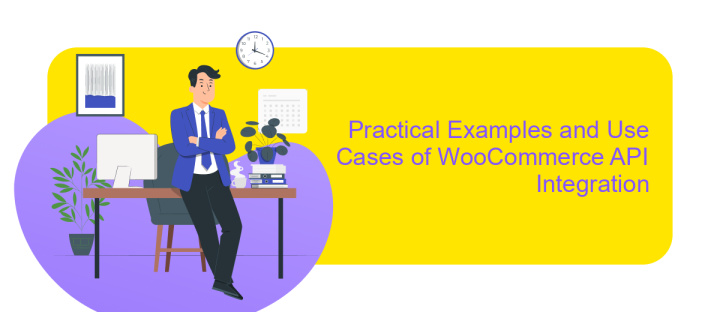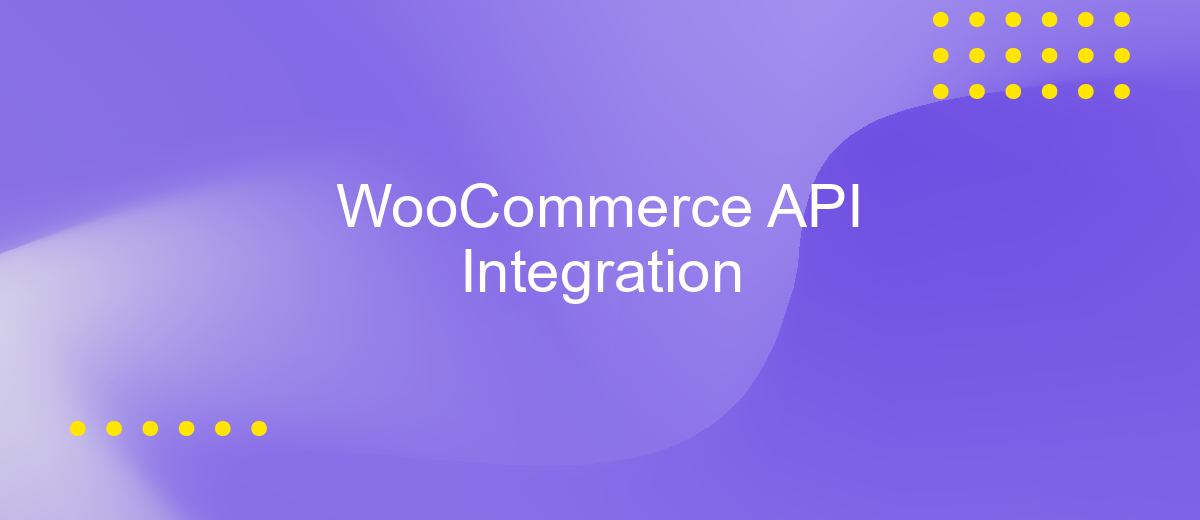WooCommerce API Integration
Integrating WooCommerce API into your e-commerce platform can revolutionize the way you manage your online store. By leveraging this powerful tool, businesses can seamlessly connect their websites with third-party applications, automate processes, and enhance customer experiences. This article explores the essentials of WooCommerce API integration, guiding you through its benefits, setup, and best practices to optimize your online business operations efficiently and effectively.
Introduction to WooCommerce API and its Benefits
WooCommerce API is a powerful tool that enables seamless integration between your WooCommerce store and other applications. By leveraging the RESTful API, developers can access and manipulate data from WooCommerce sites, allowing for enhanced functionality and automation. This integration is essential for businesses aiming to streamline operations, improve customer experiences, and expand their online presence.
- Automation: Automate tasks such as inventory management, order processing, and customer relationship management.
- Data Synchronization: Ensure real-time synchronization of product information, stock levels, and sales data across multiple platforms.
- Customization: Tailor your eCommerce solutions to meet specific business needs by customizing workflows and functionalities.
- Scalability: Easily scale your operations by integrating with various third-party services and applications.
- Enhanced Reporting: Access comprehensive data analytics to make informed business decisions and optimize performance.
Integrating WooCommerce API offers numerous benefits, making it an indispensable tool for modern eCommerce businesses. By connecting WooCommerce with other platforms and applications, companies can achieve greater efficiency, reduce manual workload, and provide a better user experience. Whether you are a developer looking to create custom solutions or a business owner seeking to optimize operations, WooCommerce API serves as a gateway to innovation and growth.
Setting up Your WooCommerce API Keys and Authentication

To begin configuring your WooCommerce API keys, navigate to your WordPress dashboard and select WooCommerce, then Settings. From there, click on the Advanced tab and choose REST API. Here, you can add a new key by clicking on Add Key. Fill in the description, select the user you wish to generate the key for, and set the permissions to Read/Write, Read, or Write, depending on your needs. Once you save these settings, the Consumer Key and Consumer Secret will be generated, which are crucial for API authentication.
For seamless integration and automation of your WooCommerce store with other applications, consider using a service like ApiX-Drive. This platform simplifies the process of connecting WooCommerce with various apps, allowing you to automate workflows without extensive coding knowledge. To authenticate with WooCommerce API using ApiX-Drive, input your Consumer Key and Consumer Secret into the ApiX-Drive interface. This setup ensures a secure and efficient connection, enabling you to focus on growing your business while ApiX-Drive handles the technical complexities.
Core API Endpoints and Functionalities (Products, Orders, Customers)

The WooCommerce API provides robust endpoints that facilitate seamless integration for managing various aspects of an online store. These core endpoints focus on crucial functionalities such as products, orders, and customers, enabling developers to automate and streamline e-commerce operations efficiently.
- Products: The API allows you to create, update, and delete products. It supports fetching product details, including variations, categories, and tags, ensuring comprehensive product management.
- Orders: With the orders endpoint, you can retrieve, update, and manage order details. This includes processing payments, updating order statuses, and accessing order history, which is vital for order tracking and fulfillment.
- Customers: The API facilitates managing customer data, enabling you to create, update, and retrieve customer information. This functionality is essential for personalizing customer experiences and maintaining accurate records.
By leveraging these core endpoints, developers can enhance the functionality of WooCommerce stores, providing a more dynamic and responsive shopping experience. The API's flexibility ensures that businesses can adapt quickly to changing market demands while maintaining efficient operations.
Practical Examples and Use Cases of WooCommerce API Integration

WooCommerce API integration offers a multitude of practical applications for businesses looking to enhance their online stores. By connecting WooCommerce with other platforms, businesses can automate processes, improve customer experiences, and streamline operations. This integration allows for seamless data exchange, ensuring that inventory levels, sales data, and customer information are always up-to-date.
One common use case is integrating WooCommerce with a CRM system. This enables businesses to track customer interactions and tailor marketing strategies accordingly. Another example is connecting WooCommerce with accounting software, which automates financial reporting and reduces manual errors.
- Automating inventory management by syncing with warehouse systems.
- Enhancing customer service through integration with helpdesk platforms.
- Facilitating multi-channel sales by linking WooCommerce with social media marketplaces.
- Customizing user experiences via integration with personalization tools.
These examples illustrate the versatility of WooCommerce API integration. By leveraging these capabilities, businesses can not only improve efficiency but also gain a competitive edge in the e-commerce landscape. Embracing these integrations is a step towards a more connected and responsive business environment.
Troubleshooting and Best Practices for WooCommerce API
When integrating WooCommerce API, you may encounter various issues. A common problem is authentication errors, often due to incorrect API keys or permissions. Ensure that your keys are correctly configured and that you have the appropriate permissions set in WooCommerce. Another frequent issue is rate limiting, which can disrupt data flow. To address this, optimize your API calls and consider implementing caching mechanisms to reduce unnecessary requests. Additionally, check for any outdated plugins or themes that might conflict with the API operation, and ensure your WooCommerce version is up to date.
Adopting best practices can streamline your WooCommerce API integration. Regularly monitor your API usage to identify and resolve potential bottlenecks early. Use tools like ApiX-Drive to automate and simplify data transfer between WooCommerce and other platforms, reducing manual errors. Furthermore, maintain detailed documentation of your API interactions and configurations, which can be invaluable for troubleshooting. Lastly, always test API changes in a staging environment before deploying them to production to minimize disruptions to your online store.
FAQ
What is WooCommerce API Integration?
How can I use WooCommerce API for my online store?
What are the benefits of integrating WooCommerce with other platforms?
How can I automate WooCommerce API integration without coding?
What should I consider before integrating WooCommerce with another system?
Apix-Drive is a simple and efficient system connector that will help you automate routine tasks and optimize business processes. You can save time and money, direct these resources to more important purposes. Test ApiX-Drive and make sure that this tool will relieve your employees and after 5 minutes of settings your business will start working faster.

